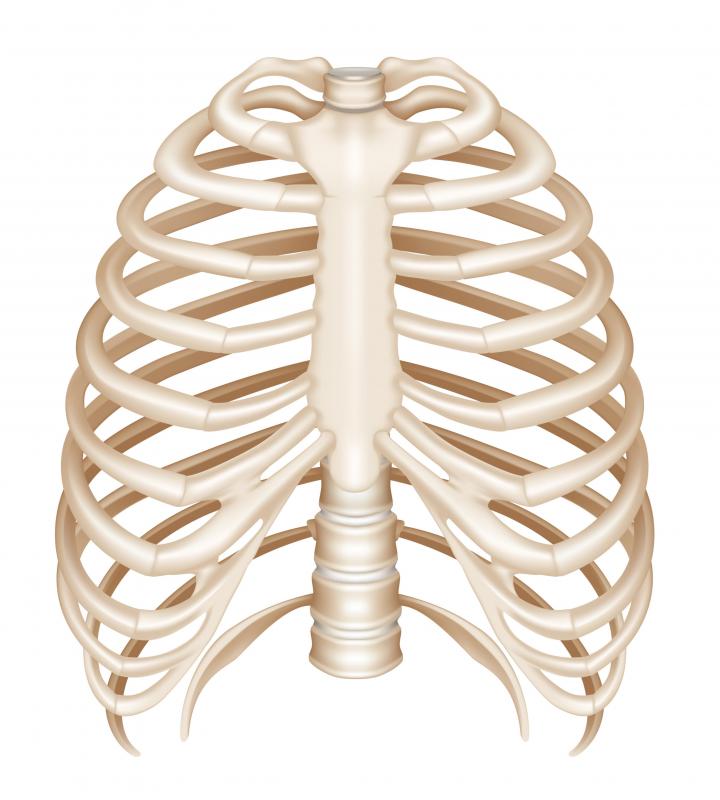At WiseGEEK, we're committed to delivering accurate, trustworthy information. Our expert-authored content is rigorously fact-checked and sourced from credible authorities. Discover how we uphold the highest standards in providing you with reliable knowledge.
What Is a Body Cavity?
Technically speaking, a body cavity is any space in an organism that is filled by viscera, or fluid. In practice, however, the term is usually used to refer to the space between the skin and the lining of the gut cavity. There are many different types of cavities in a human being, but when the phrase is used by itself it usually refers to the ventral cavity, which is by far the largest, incorporating both the abdominopelvic cavity and the thoracic cavity.
The dorsal cavity is the other large body cavity in a human being, covering the backside of the body. This includes both the spinal cavity and the cranial cavity. The spinal cavity, also referred to as the spinal canal, is the space in the middle of the vertebrae, through which the spinal cord passes. The cranial cavity, also known as the intracranial space, is the space inside of the skull. The cranial cavity contains the brain, but also holds the eyes and the organs of the ears.

The ventral cavity, on the front of the body, contains a number of smaller cavities as well. The thoracic cavity is formed by the ribs, which help protect the fragile organs held within, assisted by various muscle and fascia to form a sturdy wall. Inside the thoracic cavity are many of the body’s most recognizable organs. The heart, the lungs, the bronchi, the esophagus, and others all reside in the thoracic cavity, and penetration of the outer layer can cause serious medical complications. If enough air enters the thoracic cavity, the lungs can collapse, and death can follow.

The thoracic cavity sits atop the abdominal cavity, and is separated by that cavity by the diaphragm. At the top, the thoracic cavity is bounded by the first ribs on either side, the spine on the back, and the upper part of the sternum on the front. The thoracic cavity is what most people think of when they think of a body cavity.
The abdominal cavity, also contained within the ventral body cavity, is the other major cavity on the human body. It contains most of the other major organs that the thoracic cavity does not, including the liver, spleen, gallbladder, kidneys, intestines, pancreas, and stomach, as well as the majority of viscera in the body. The abdominal cavity is protected by a layer called the peritoneum, one of the strongest membranes in the body. The abdominal cavity is atop the pelvic cavity, and with that cavity makes up a larger body called the abdominopelvic cavity.

The pelvic cavity contains mostly reproductive and waste-related organs, most notably the bladder, the rectum, and sex-specific organs of reproduction. The pelvic cavity is bounded by the coccyx on the back, the pubic symphysis on the front, and the obturator internus on the sides. The pelvic cavity is the lowermost body cavity on the human body, and is also one of the most crowded.

Often people use the term body cavity in an informal sense to refer to an area searched, for example by police officers or airport security. In this sense it refers to the rectum and vagina on women, and just the rectum on men. Searching these areas for contraband material like drugs is referred to as a body cavity search.
AS FEATURED ON:
AS FEATURED ON:
















Discussion Comments
@doppler - I think many people discount the dorsal body cavity organs, which are the spinal cord and the brain, because they are such an intricate part of our being. Think about it: without the function of one or both of these organs you would either be dead or might as well be (you could potentially be a "vegetable" and be paralyzed permanently).
It might sound weird, but people associate the word "cavity" with a vacuous space rather than having something in it... there could quite honestly be this correlative thinking *because* of all those cavity searches depicted on TV.
@lmorales - I think people associate that phrase with an actual body cavity check because they are portrayed in movies and stuff so much - not really because they have a questionable character.
@doppler - That's very true in both aspects. I think that many people associate the phrase "body cavity" with cavity searches. Although it makes me wonder sometimes about their character.
The interesting thing here is that the most protective body cavity would be your skull or cranium. I think many people don't think about this as a cavity simply because it's full of brain matter rather than fluid as the article states above, but it really is.
Post your comments